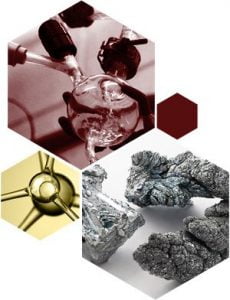
Cerium (III) Chloride Hydrate
Properties

- We can offer items in bulk or custom. For other quantities or purities, please request a quotation.
- All prices are subject to change.
Related Products
Information about Cerium (III) Chloride Hydrate / CAS 19423-76-8
Cerium (III) Chloride Hydrate (CeCl₃·XH₂O) is a versatile inorganic compound primarily used in laboratory and research applications such as organic and materials synthesis, and environmental remediation. It is a key reagent in numerous chemical reactions, prized for its catalytic properties, redox behavior, and role in the synthesis of complex organic molecules. Due to its solubility in polar solvents and its ability to stabilize reactive intermediates, Cerium (III) Chloride has become an essential component in laboratories and specialty industrial processes.
In organic synthesis, Cerium (III) Chloride plays a crucial role in selective reductions and carbon-carbon bond formations. It is frequently employed in the Luche reduction, where it enhances the chemoselectivity of Sodium Borohydride, allowing for the controlled reduction of α,β-unsaturated carbonyl compounds to allylic alcohols. Additionally, it has been extensively used in ketone alkylation reactions, facilitating direct alkylation without unwanted side reactions. The reagent is also valuable for the deprotection of methoxyethoxymethyl (MEM) ethers, providing a gentle and efficient method for unmasking hydroxyl groups in complex organic molecules.
In the field of nanotechnology and biomedicine, Cerium (III) Chloride hydrate is used as a precursor for Cerium Oxide nanoparticles (CeO₂), which exhibit unique catalytic, antioxidant, and biomedical properties. These nanoparticles have shown promise in enzyme inhibition studies, particularly in their ability to modulate α-glucosidase activity, which is relevant for diabetes research.
Photochemistry and redox chemistry have also benefited from Cerium (III) Chloride, particularly through the development of the hexachlorocerate(III) anion ([CeCl₆]³⁻) as a stable photo-reductant. This anion has opened new avenues for light-driven redox reactions, expanding the scope of cerium-based photochemistry.
Cerium (III) Chloride hydrate also plays a crucial role in advanced materials research, particularly in photocatalysis and protective coatings. It serves as a precursor for CeO₂/Ce₂O₃ heterostructures that enhance CO₂ reduction under visible light, achieving high selectivity in CO₂-to-CO conversion through Ce³⁺/Ce⁴⁺ redox cycling. Additionally, CeCl₃-derived Ce(OH)₃ nanolayers have been developed for corrosion-resistant coatings on steel substrates, significantly reducing degradation in saline environments. These emerging applications highlight cerium(III) chloride’s expanding role in sustainable chemistry, energy conversion, and industrial coatings.
- Šťastná, E., Černý, I., Pouzar, V., & Chodounská, H. (2010). Stereoselectivity of sodium borohydride reduction of saturated steroidal ketones utilizing conditions of Luche reduction. Steroids, 75(10), 721-725.
- Maity, P., Gujjar, M., Vellingiri, R., Lakshminarasimhan, T., DelMonte, A. J., Young, I. S., … & Vaidyanathan, R. (2019). Cerium(III) chloride-mediated stereoselective reduction of a 4-substituted cyclohexanone using NaBH4. Organic Process Research & Development, 23(12), 2754-2757.
Safety
- H315 Causes skin irritation.
- H319 Causes serious eye irritation.
- H335 May cause respiratory irritation.
- P261 Avoid breathing dust/fume/gas/mist/vapours/spray.
- P280 Wear protective gloves/protective clothing/eye protection/face protection.
- P305+P351+P338 IF IN EYES: Rinse cautiously with water for several minutes. Remove contact lenses, if present and easy to do. Continue rinsing.
- P304+P340 IF INHALED: Remove victim to fresh air and Keep at rest in a position comfortable for breathing.



